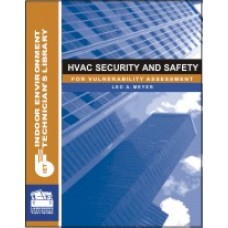
|
| Andrew Gaved |
Retailers have called on the cooling supply chain for solutions to help them meet a triple challenge of tight margins, smaller store footprints, and new refrigerant choices.
Speakers at Refrigeration and Air Conditioning Magazine’s Retail Question Time have agreed on their belief that intense competition in the sector and changing customer behavior have changed the landscape for supermarket refrigeration.
The drive for customers towards home shopping and convenience stores together with the impact of F-gas and the forthcoming Ecodesign directive, which will set tough limits on cabinet energy use, will make the challenge harder, they said.
Colin Coe of Morrisons said, “We have an aging estate and a bigger estate. The big shift is that money will need to be spent on maintenance, not new store building; we will need to sweat the assets. It is the changing dynamics of retail — we now have the discerning shopper to deal with. No longer will they just come to Morrisons to do a weekly shop, but they will shop around — and that has an impact on things.
“We also have the rise of convenience and of online and each one of those changes how we operate — more delivering will mean more distribution to feed all this.”
John Skelton of Sainsbury’s, which now has 650 local convenience stores, agreed. “Convenience is a real challenge for us. These are the stores that are making the money but also the most challenging to deliver — they normally are the most compromised sites in compromised locations and they have a short window to be fitted out.
“We haven’t got a viable cost effective natural solution for convenience yet, although we are just about to launch our second CO2 solution. We need to look at things differently and we are looking for people to come up with smart solutions for us.”
One of the key elements of convenience style stores is energy intensity, so the retail refrigeration managers are looking for more use of heat recovery in these stores, and this provides an ideal opportunity for the cooling industry to take the lead, challenged Skelton. “We are running trials into reclaiming the heat from refrigeration and they are going well, but we need to think about both system integration and building integration. I think it is a fantastic opportunity for the refrigeration industry to step up and have more influence.
“We use 1 percent of the UK’s energy and 40-50 percent of that is refrigeration. To my mind, our industry has got to be in the lead, and at the moment we are trailing behind our M&E colleagues.”
Coe, too, said that system integration will be key to the future of convenience stores. “Integration is something we are looking at — in my view we have a system that is generating heat but we are not utilizing it to its best advantage.
“We are not utilizing the refrigeration system to its optimum. In future we need to be looking at major integration with mechanical services to deliver heat. All our trials have shown some sort of success, but it has been a massive learning curve.
“It is going to be one of the key elements in the future — we should no longer be looking at the refrigeration system on its own. Once we have refrigeration integrated with mechanical, it will need the skills who can look at both, and who can look at the energy side too.”
Content for the European Spotlight is provided courtesy of Refrigeration and Air Conditioning Magazine, London. For more information, visit www.racplus.com.
Publication date: 2/2/2015










